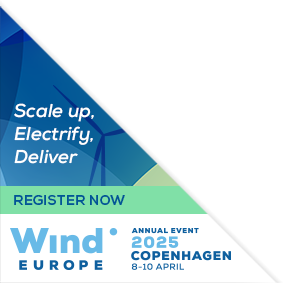Posters
Siblings:
ProceedingsProgrammeSpeakersPostersContent PartnersPowering the FutureMarkets TheatreResearch & Innovation in actionStudent programmePresenters dashboardCome meet the poster presenters to ask them questions and discuss their work
We would like to invite you to come and see the posters at our upcoming conference. The posters will showcase a diverse range of research topics, and will give delegates an opportunity to engage with the authors and learn more about their work. Whether you are a seasoned researcher or simply curious about the latest developments in your field, we believe that the posters will offer something of interest to everyone. So please join us at the conference and take advantage of this opportunity to learn and engage with your peers in the academic community. We look forward to seeing you there!

PO107: A novel Digital Twin-based Structural Health Monitoring solution for offshore wind turbine platforms
Julio García Espinosa, Full professor of shipbuilding technology - Deputy Director for Institutional Relations, Technical University of Madrid
Abstract
This work presents a methodology developed for the generation of a digital twin (DT) with application to the assessment and structural health monitoring of a floating offshore wind platform. The structural dynamics of the system floater and towers is approximated in the modal basis using a Modal Matrix Reduction (MMR) technique, where a large number of modes (in the order of 1000) are used to accurately approximate the equivalent high fidelity solution obtained by a finite element model. Once the modal basis is obtained, the structural dynamics equations in the modal basis is fully coupled with the time-domain seakeeping hydrodynamic solver SeaFEM (https://www.compassis.com/en/software/seakeeping-tdyn-seafem/). This hydro-elastic framework enables to perform hydro-elastic simulations under environmental loads. The MMR-hydroelastic model is coupled with an aero-servo model, based on an adapted version of OpenFAST. Two different methodologies to use the DT are presented: the first one based on obtaining modal response amplitude operators (MRAOs) of the structural response under linearized wind and wave loads; the second one based on direct simulation including non-linear external loads but only using those most significant modes selected by structural energy criterion. The validity of the methodology is shown in different case studies. For Structural Health Monitoring (SHM) applications, the digital twin is implemented within an Open Source IOT platform (OSI4IOT) developed in the context of the H2020 project Fibre4Yards (https://www.fibre4yards.eu/). In particular, in the context of the H2020 project Fibregy (https://fibregy.eu/), the DT has been implemented to support a monitoring system implemented in the 1:6 scale prototype of the twin turbine platform W2Power. In order to increase the precision of the DT model predictions, data learning algorithms are used.










